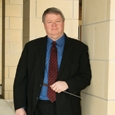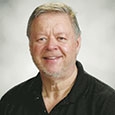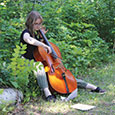Editor’s note: This article is part one of two. The second installment will appear in the June/July online issue.
Great advanced bands are formed by what happens in beginning band. One of the most important parts of a beginning band curriculum should be generating excitement and passion in students for playing their instruments. In addition, if there are specific problems in advanced bands, these can be addressed in the beginning band curriculum. Here is how we set a strong foundation in the first six weeks of beginning band.
Day One
This is spent on classroom rules and regulations. Children have enough to worry about on the first day of middle school without managing an instrument on top of it. Students already know what instrument they are going play; we screen them months in advance. We send email with required supplies before the summer and places to rent or purchase instruments and supplies.
Day Two
Students bring all their equipment except their home wire music stand. This includes not just instrument, mouthpiece, and reed, but cleaning and maintenance supplies as well as their metronome and tuner. Although our classes are divided by instrument for the rest of the year, I teach every beginning class all day on days two and three of the first week to show all the students exactly how I want them to sit, and how to do a posture chant, which is “Flat feet, back straight, hiney on the hump, ugh!” When they do the chant, they must shout it and perform the movements together. (The hump refers to the edge of the chair, which has a bump.)
I also teach students to tap their foot with the metronome set at 70 beats per minute. Students tap saying mom-ma-dad-dy as sixteenth notes. Saying momma when the foot is down keeps their foot in contact with the ground longer and prevents them from bouncing the foot up. We later move to down-up, down-up as eighth notes or down-down-up-up as sixteenths. Before we add numbers, students just need to know whether they play when their foot is down or up. We add more traditional counting after the first month.
While I am teaching, our assistant directors check students for the correct instruments and supplies. We have a spreadsheet with all the items on it, and we verify that they have the correct brands, mouthpieces, and all the accessories. If you do not have an assistant, have the students leave their supplies in the band hall overnight and you can check them later.
Students have a fun homework assignment for day two. They must listen to 30 minutes of music and tap their foot to the beat. I give students a paper to prove this is an actual assignment; otherwise parents would never believe it.
Day Three
This is the last day this week with combined classes; students are separated by instrument after this. After reviewing the seating, posture, and foot tap, we discuss breathing. We use four concepts with breathing exercises:
• Always breathe through the mouth and not the nose. (Although we do let players breathe through the nose the first week or so while they are setting the embouchure, we never allow nose breathing after the first two weeks.)
• Do not hold air in; after inhaling, immediately exhale.
• Do not lift your shoulders when breathing.
• Do not make any noise when breathing.
In addition, when exhaling, the air should flow out like water in a river – constant, smooth, and steady – and extend far away from the student. A strange but effective analogy I use for airflow is to try to blow a small folded paper sailboat across a pool in just one breath. Because it is paper, there is little time to get the boat across before it takes on water and sinks. Puffing out all the air in a ball will make the sailboat topple over and sink, and if the air is not blown outward to a distant point, the sailboat only goes a few feet before it gets waterlogged and sinks. Only when you visualize the sailboat going all the way across the pool with the air reaching out all the way does it make it. We also talk about faster air (especially for higher notes), not just a larger amount of air.
The third day is also when we introduce the Master of the Alphabet. This exercise is a vital part of our beginning band program and consists of saying the musical alphabet forward and backward starting on every letter, such as:
A-B-C-D-E-F-G-A-G-F-E-D-C-B-A
B-C-D-E-F-G-A-B-A-G-F-E-D-C-B
C-D-E-F-G-A-B-C-B-A-G-F-E-D-C
Students must say each letter fortissimo while clapping hard on their thighs on the beat. When clapping on the thighs, the arms should be locked straight down with only the forearms moving up and down at the elbow. This teaches students to keep the upper body still, which is essential when playing. Over the next week to ten days they will pass off each line of the alphabet. They do not pass if they say the wrong letter, pause or hesitate, have a soft, timid voice, or say the words out of sync with the metronome or their leg slap. They get to keep trying to pass off the lines until they get it. It teaches them not to give up and that we are patient with them. It also shows that we will never give up on them.
There are several additional benefits of this exercise. It teaches students to be confident and unafraid of emoting in front of others, it teaches them the coordination of the hands, mouth, and metronome required to play a wind instrument, and it gets them intellectually to be able to conceptualize the ascending and descending notes, which will later help them perform scales.
After all the students master the alphabet, I review it every Monday the rest of the semester so they do not lose the skill. We begin major scales after Thanksgiving, and learning them is a lot easier after weeks of the Master of the Alphabet.
I talk at the end of class about how we should play with a natural face that is relaxed like watching television. Students are required that night to watch 30 minutes of network programming with commercials (no Netflix or premium movie channels). As soon as a commercial comes on students are to think about what their face is doing. Eyes are relaxed, teeth are slightly apart (no one watches television with their teeth clenched or agape), jaw is relaxed and easily moves side to side, and the neck and soft tissue between the fingers are free from tension. This sets them up for the next day when we talk about the embouchure. I also give them a paper to confirm this assignment because parents never believe students are required to watch television for school.
Days Four and Five
Students are now separated by instrument. We have three full-time band directors as well as a percussion teacher on campus every day and are able to divide instruments into homogenous classes. Teachers review everything, including posture, breathing, foot tap, and Master of the Alphabet. We review these relentlessly every day. The focus for these days is caring for the instruments, identifying the parts of the instrument, and opening the cases correctly (on the floor). For most instruments, students all sit on the floor the second week until they can assemble and disassemble their instruments correctly.
We do not start music theory for a week or so because students want to start playing. I know they joined band to play, not work on fundamentals, but it is essential to be strict on learning the fundamental concepts sequentially: sitting, breathing, holding, fingering, then embouchure. We try to make class fun even though we are not yet playing, and we discuss delayed gratification.
Although we play a great deal in class the next few weeks, students are not allowed to bring their instruments home on the weekends for the first three weeks, and then they may only take parts or their mouthpiece, never the whole thing, to avoid bad habits.
Week Two
I learned from Eddie Green that it is best to teach the concepts of learning the instrument separately before putting them together. A favorite quotes is when a band director said to him, “I have asked my kids to sit up in their chair 1,000 times, what should I do?” to which Mr. Green responded, “Have you tried 1,001?” Practice many small skills repeatedly for a duration that matches students’ attention span. We do nothing for longer than six to eight minutes at a time before moving on to another concept.
This is the breakdown of a typical rehearsal in beginning band class (46 minutes) the first six weeks:
• Enter the room, open band lockers, get instrument cases and binders (2 minutes).
• Master of the Alphabet. This will eventually be student led (one minute).
• Foot tap to the metronome (2 minutes).
• Breathing exercises (eventually student led) (2 minutes).
• Assemble the instrument and name the parts of the instrument worksheet (2-3 minutes)
• Practice pressing the buttons/keys in time with the metronome without playing while checking and rechecking posture and hand position. (3-4 minutes)
• Embouchure formation with small locker mirrors (stressing natural face) (8-10 minutes)
• Breathing and exhaling to play (keep face still) Put your finger 1 centimeter away from your lips and blow. You should be able to hear the air on your finger and determine if the air low is constant, smooth, and steady. (5 minutes)
Eventually we work on articulation (separate from playing) for five to six minutes, rhythm counting and playing on a unison pitch, and music reading speed drills.
Toward the end of the second week, students make their first sounds on parts of their instruments, with the goal of producing specific pitches.
• Flute: A on the headjoint.
• Oboe: Reed crow on a B or C.
• Bassoon: Reed crow on a G or A
• Clarinet: Concert F# on the mouthpiece and barrel.
• Alto Sax: A steady concert G# on the mouthpiece and neck.
• Trumpet: The first sound is with mouthpiece in and the main tuning slide removed. We call this playing their vuvuzela. Using the vuvuzela, they get the feeling of blowing through the instrument rather than blowing into it. They should match a concert Eb or E.
• Horn: Remove the first slide coming from the lead pipe, buzz a concert F (the horn’s written C4). The horn players should be able to feel the steady, fast rush of air that come back and brushes their necks from removing the slide.
• Trombone: Trombones should buzz a Db without the main slide. As with trumpets, we refer to this as vuvuzela.
• Euphonium and Tuba: Although we aim for an F on the mouthpiece, I am not looking for a certain pitch on the mouthpiece as much as I want a relaxed, airy buzz that begins without the lips touching in the center. Tubists play euphoniums until November. Starting on euphoniums instead of tubas gives the tuba players have an easier time starting and getting air through an instrument. They also move a lot faster at the beginning if they are not on the tubas.
All brass instruments will use a B.E.R.P., which attaches to the leadpipe. The mouthpiece goes into the B.E.R.P., permitting students to buzz while demonstrating proper posture and instrument angle. You can also adjust the resistance on the B.E.R.P. to simulate the instrument’s air resistance. We use the B.E.R.P. daily before playing a book line on the instruments.
By the end of the second week the students may take their instrument home without their mouthpieces. They are required to teach parents everything they have the first two weeks: Posture (including the chant), Master of the Alphabet, breathing exercises, and how to assemble and hold the instrument. Doing this strengthens understanding of what we are teaching, and lets the parents know how much we have done. The parents are amazed, and students enjoy watching their parents struggle to say the alphabet backward.
Week Three
By week three we begin transferring concepts to the instrument and putting all the fundamentals together. Students must tap their foot whenever they do anything that requires counting.
We begin to incorporate theory into lessons (clef, staff, and note names) but only spend five to six minutes each day on it. I dislike mnemonics like “every good boy does fine.” This teaches students to learn the upper notes of the staff only by counting from the bottom of the staff every time. It is better to teach the location of the notes independently. For bass clef:
G is the ground floor of the elevator
B, the second line of the staff, recalls Shakespeare: “Two B or not Two B, that is the question.”
D is dead center of the staff.
F is for the F clef line; the music gives you the answer.
A is the attic of the staff.
In addition, we never permit students to write note names or fingerings in the method book or on music, not even in these first few weeks of school.
Although we are separated by instrument every day, we come together for the first 10-13 minutes of the class period on Tuesdays and Thursdays to work on a group theory and pulse computer program called Rhythm Bee. It teaches the foot tap and pulse visually as it moves through different rhythmic patters, including whole, half, quarter, and eighth notes and rests. Students can see and copy the foot movement graphics, and the tempo on these short lessons is adjustable. By the end of the second six weeks we even have students go back to the first few lessons and actually play along with the Rhythm Bee exercises on their instruments on a concert F. This activity does take class time away from other things, but it is only twice a week for ten minutes, and students love being together each week for a brief time. We see marked improvement in student ability to keep a pulse, plus we do not have to do as much teaching on rhythm the rest of the week.
I am not a big fan of clapping rhythms during the first year of band. Without a way to simulate duration, a single clap represents a whole note, half note, quarter note, or eighth note and does not help students separate these concepts. Also, the silence between the notes tends to make the students jump forward in the pulse to fill up the silence. When students clap, the hands should stick together but still pulse up and down for notes longer than an eighth note. I do have students clap but prefer playing rhythms on one note before playing a piece. Some teachers like to have their students hiss rhythms between their teeth before they play, but this teaches students to bring their teeth close together, and in some cases tongue on the tip of the teeth. It is better to blow air on the finger for expressing rhythms away from the instrument.
Keeping a steady sound with a still face is essential, and we spend a majority of time this week and next week practicing this on both mouthpieces/ reeds and the instrument. Students partner up to graph each other’s sounds on the mouthpiece and then again on the instrument (credit to Duncanville ISD). Students play five times on their mouthpiece and then five times on their instrument while the partner draws the sound they hear. The partner documents every bump and wiggle in the sound for ten seconds. Students have to fill out this form with a friend, parent, or sibling at the beginning of the week and then again on the weekend to graph the progress made from the first time.
During the first week of playing on the instrument it is essential that students feel successful. If I want a student to play an F on euphonium, but he hits low Bb, great. That student is now our low note specialist and ahead of the class in that. After praise, I will have him zip-lock the corners of the mouth from the outside-in, speed up the air, and attempt a higher note. I always compliment the students on something.
All students should know that they succeed at playing an instrument. This is especially difficult for both the lower-performing academic students, who will struggle with multitasking, as well as the high-achieving left-brain children who are used to instant success at everything they do.
We do not have chair tests or placements in beginning band as there will be plenty of time in the years ahead for that. No beginner should be designated last chair and feel like a failure while still young and impressionable.
David Dunham can be reached at DunhamD@friscoisd.org.
Breathing Exercises
While standing, bring the hand slowly to the face when breathing in, and then slowly move it away on the exhalation. Make smooth, flowing hand movements and do not hold air inside. We start with four counts in, then four out and move on to two in and six out, followed by one count breathing in and eight counts breathing out.
In addition, we also use a few of the Breathing Gym exercises by Sam Pilafian and Patrick Sheridan (Focus on Music Publishing).
Three Sips: Students take as big a breath as they possibly can, hold it, and then pack in three additional sips of air before exhaling. This does require holding air, but this is acceptable when specifically working on expanding air capacity.
Suction Cup: In the middle of inhaling, the back of the hand blocks the mouth, like putting a vacuum nozzle on your arm. When the hand is pulled away, additional air should rush in, then blow out.
Throwing Darts: Inhale and blow, articulating too while pretending to throw a dart.
Paper Airplane: This is almost identical to the dart, but the air continues while the hand stays out after throwing an imaginary paper airplane.
We practice these breathing exercises a few times a week in each class, from beginners all the way up to the top seventh and eighth grade band. I believe they are especially important to revisit daily in the weeks before concerts and contests.
History of the Instrument
Students are required to research the history of their instrument for a major test grade. They can use the internet, documenting the websites, and present their information in a poster (preferred) or as a typed paper. Their project can be as creative as they wish, and the posters must be three-dimensional. Some students will make crude sculpture replicas of their instrument using such materials as PVC pipe, hoses, aluminum foil, and shirt buttons. Every project poster must include the following:
• Where their instrument was developed.
• When it was invented or developed. This should include reference to the historical period.
• Which person or people invented or developed it.
• How it changed over time (added keys, changed size, made from different materials, etc.).
• Famous people, events, and locations associated with the instrument. This can include famous music associated with the instrument.
Parents and classroom teachers are especially appreciative of this project because it gives an initial foray into academic research. Administrators love this project because we support school-wide curriculum. The best posters are hung in the hallways until after the first beginner concert in November.






